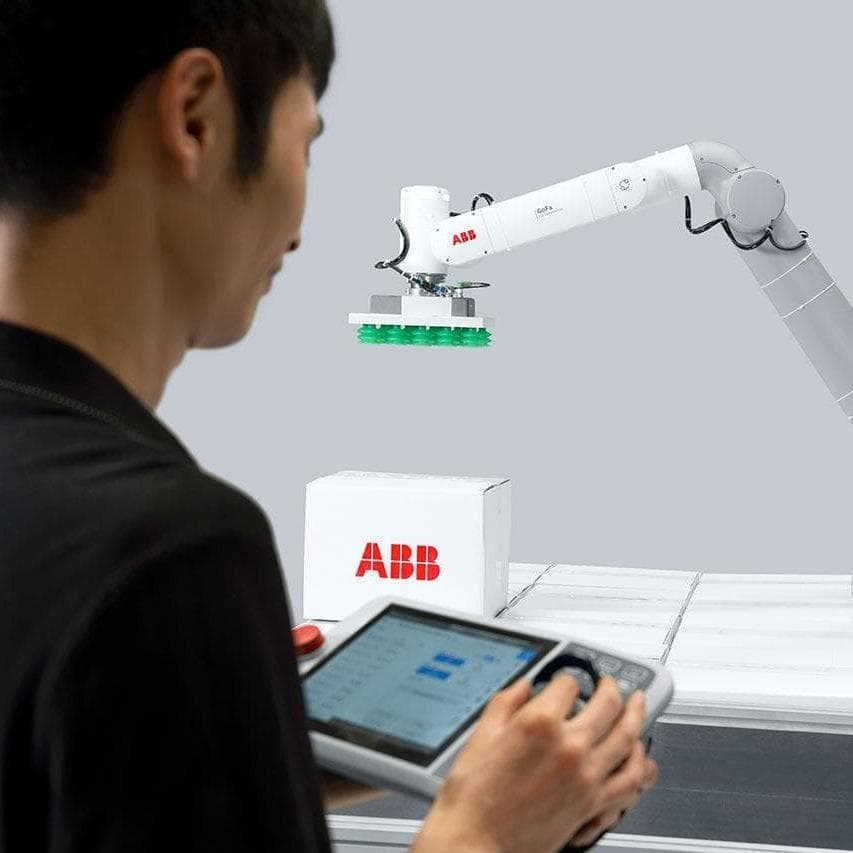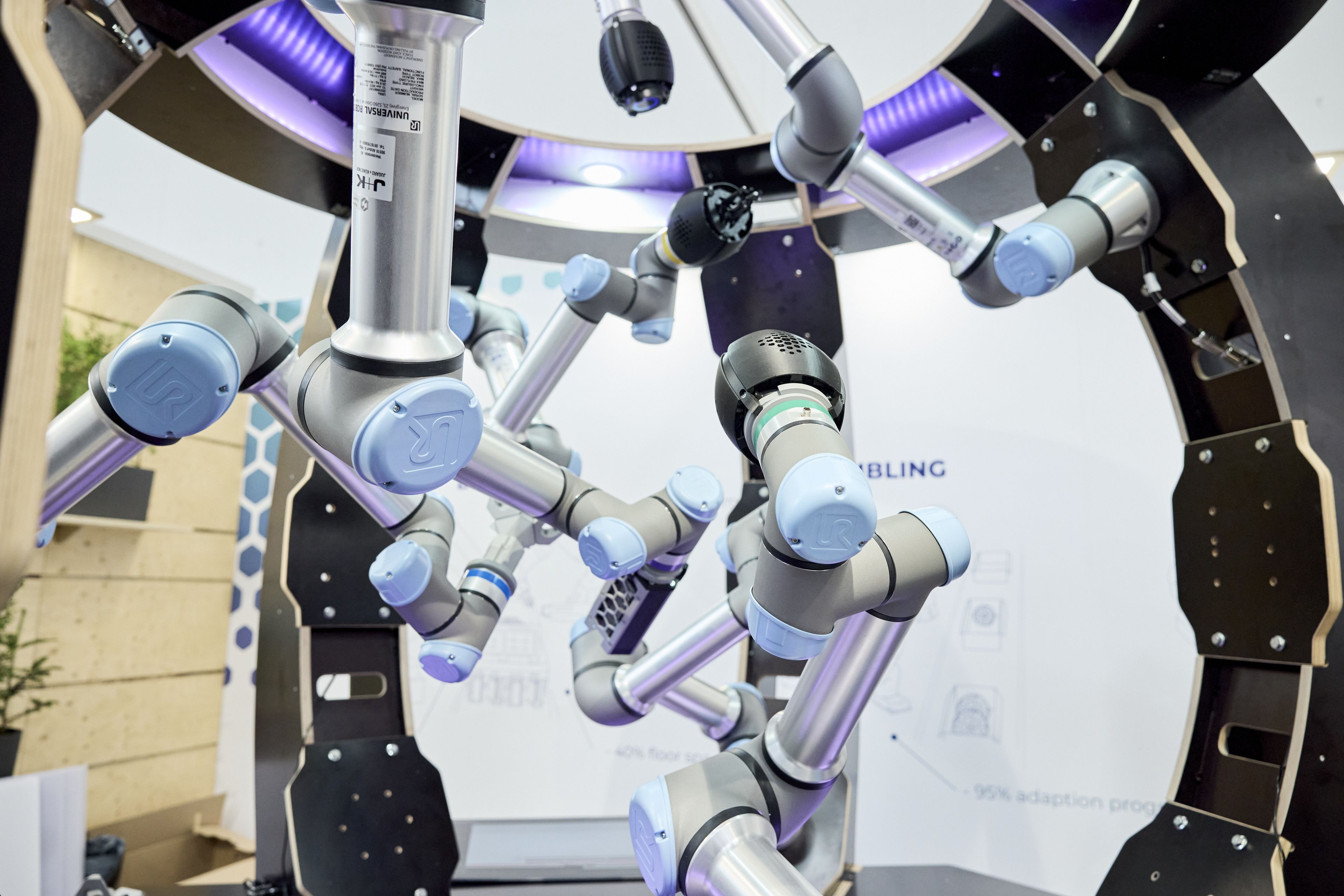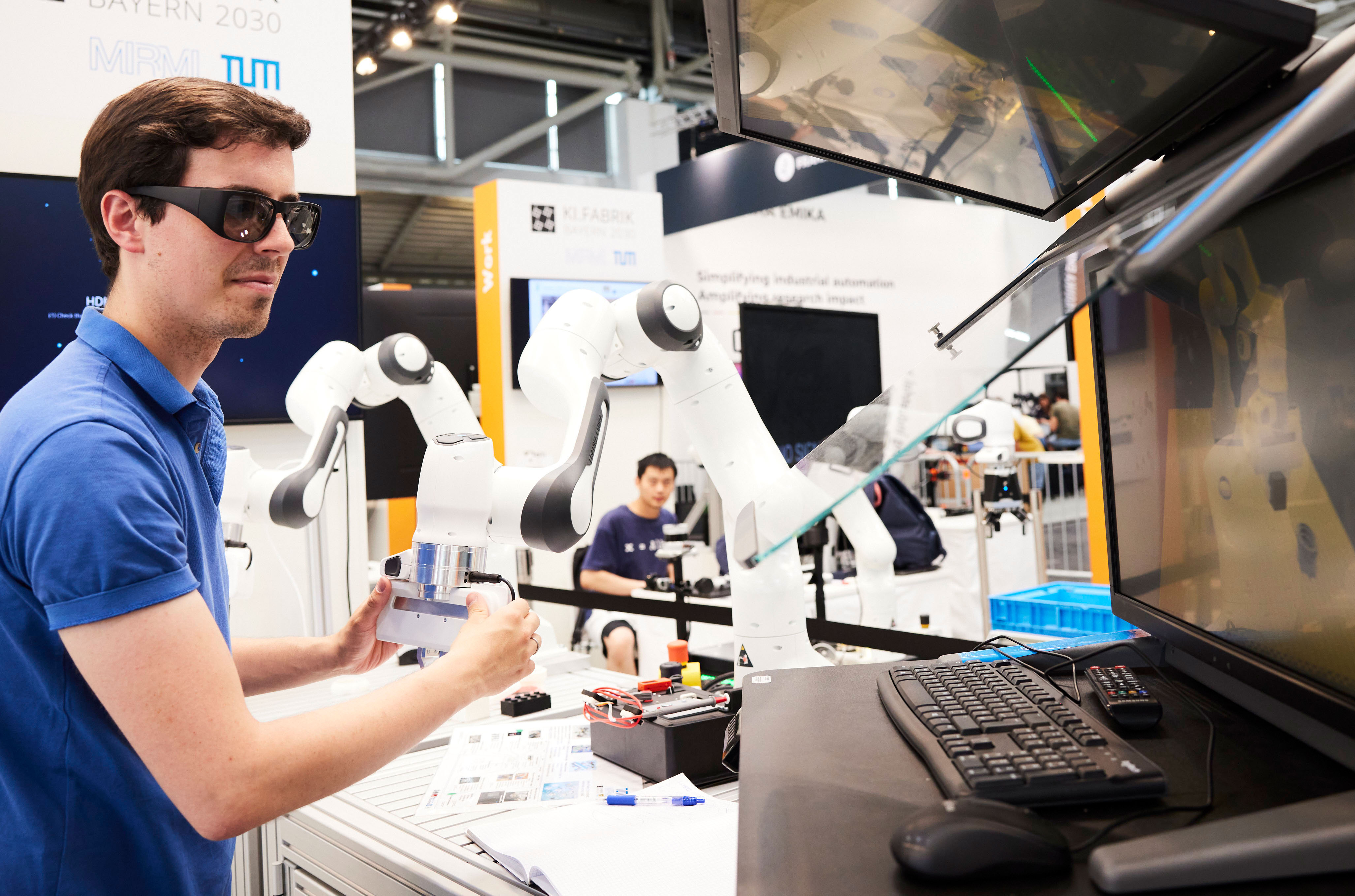Robotics and AI
Trends in robotics
The solutions that intelligent automation and robotics offer for the challenges of the future were demonstrated at the leading trade fair automatica in Munich from 24 to 27 June 2025.

Pictures: Munich Trade Fair Centre; ABB Robotics


Around 800 exhibitors from 40 countries presented products and solutions relating to AI-supported robotics, SME automation, healthtech solutions, mobile robotics and networked production to almost 49,300 visitors. From the perspective of Dr Reinhard Pfeiffer, Co-CEO of Messe München, this was a mix of topics that reflected the most important trends shaping robotics and automation in 2025.
Physical, analytical, generative
The trend towards the increased use of artificial intelligence was also evident at automatica. In robotics, for example, various AI technologies are helping to perform a wide range of tasks more efficiently. Analytical AI can be used to process and analyse large amounts of data collected by robot sensors. This helps to react to unpredictable situations or changing conditions in public spaces or in the production of "high-mix-low-volume tasks". Robots equipped with image processing systems analyse their work steps in order to recognise patterns and optimise work processes. The aim is to increase speed and precision, for example. A good example is hand-eye coordination, one of the most complex challenges in robotics. What humans learn instinctively is one of the most complex challenges in automation: seeing, recognising and grasping objects. The award-winning smart picking solution robobrain.vision masters this challenge with artificial intelligence and complex vision algorithms. The camera recognises the objects to be gripped without training and independently of the coordinates and autonomously identifies ideal gripping points. The smart picking system of the future. "Genuine artificial intelligence as a link for unstructured processes opens up completely new fields of application in automation. Even if the product variance of the application changes, thanks to AI this can be solved and tasks can be responded to flexibly," explains Tobias Rietzler, CEO at Robominds. Robots in human form, so-called humanoids, also attracted a great deal of interest at automatica. Robots that become all-purpose tools, that can independently load a dishwasher and equally work elsewhere on an assembly line. Start-ups in particular are working on these humanoid all-rounders. Industrial manufacturers, on the other hand, are focussing on humanoids that initially perform individual tasks.
Design inspired by the human form
Neura Robotics is a pioneer in cognitive robotics. The company showcased several innovations at the trade fair in Munich. First and foremost, there was the world premiere of the third generation of the humanoid robot 4NE1, the market launch of the cognitive household and service robot MiPA and the open robotics ecosystem Neuraverse. 4NE1, which stands for "For Anyone", is a humanoid robot that works autonomously and safely with people in real environments. Its cognitive intelligence enables it to perceive its environment independently, make decisions and learn from experience. The patented Neura Omnisensor is a breakthrough in safe human-robot collaboration: 4NE1 can reliably distinguish people from objects, recognise them and adapt its behaviour accordingly. This technology enables direct collaboration with robots. 4NE1 has an intelligent dual battery system for uninterrupted 24/7 operation, lifts up to 100 kilograms thanks to powerful joint technology and is equipped with fine motorised, adaptive hands. This makes the robot suitable for complex tasks in industry as well as for activities in the household or service sector.
Robots against the labour shortage
One of these humanoid all-rounders might also be a solution to the labour shortage. According to the International Labour Organization (ILO), the global manufacturing industry is suffering from a labour shortage. One of the main reasons for this is demographic change, which is putting a strain on the labour markets in leading economies such as the United States, Japan, China, the Republic of Korea and Germany. The use of humanoid robots - as well as other robotic solutions - could reduce the impact of labour shortages in manufacturing. Robots take over tasks such as tiring visual quality checks, unhealthy painting work or heavy lifting. Collaborating robots (cobots) or mobile manipulators quickly and efficiently close gaps in the work process whenever and wherever they are needed.
ABB Robotics has also added three new robot families to its portfolio in order to strengthen its position in China's growing market. With its robotics business, the company has played a leading role in the Chinese market for 30 years. The new robot families from ABB Robotics are produced in a mega-factory in Shanghai and cover a wide range of automation tasks - from basic material handling to sophisticated processes such as dispensing and polishing. PoWa, for example, is a compact cobot designed for speed, collaboration and efficiency. With speeds of up to 5.8 m/s, it is ideal for fast pick-and-place, palletising and machine tending tasks. PoWa is already available in China and features no-code programming and plug-and-play technology. The cobot can be up and running within 60 minutes and is an attractive solution for small and medium-sized companies and therefore also a solution to labour shortages. The intuitive control software from igus makes it possible, for example, to operate all robots available on the online robotics marketplace RBTX in a standardised way, regardless of the manufacturer, and to easily integrate accessories such as cameras, grippers or robot cells. RobotCtrl thus significantly reduces the operating complexity and integration effort for beginners and professionals. Support for the robotics manufacturers Lebai, Hitbot and Lynx Motion is a new addition.
Key role for sustainability
Robots also play a key role in fulfilling the sustainability goals of the United Nations (UN). This is because robotics fundamentally reduces material waste. They ensure consistent quality, which is essential for products with a long service life and minimal maintenance requirements. They also enable manufacturers to scale their production quickly without compromising on quality or sustainability. One example in the packaging environment is the GMP-compliant RX 4.0 thermoforming packaging machine from Multivac. The first-time use of a Yaskawa six-axis robot brings a decisive plus in terms of flexibility in particular. (hw)